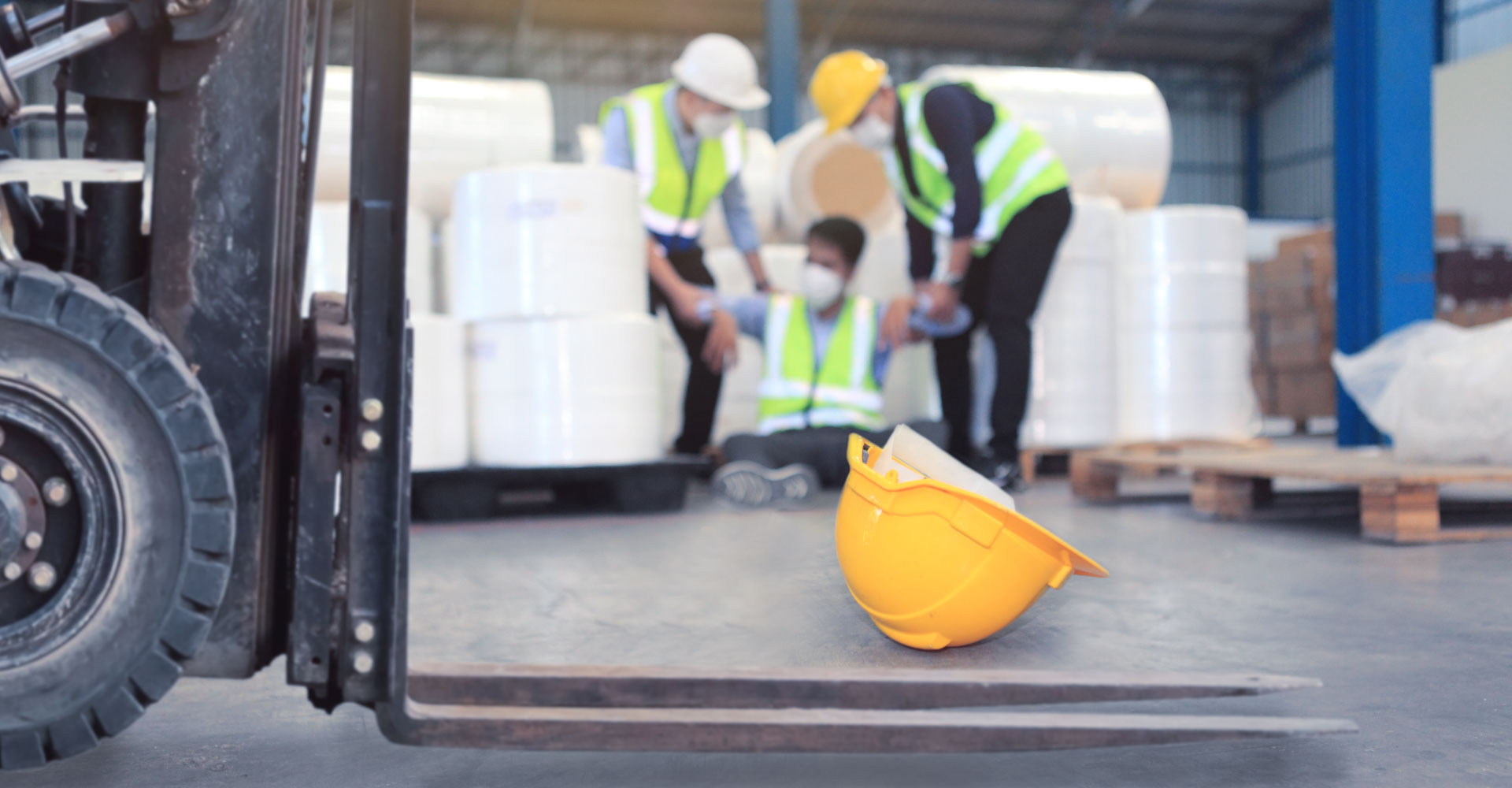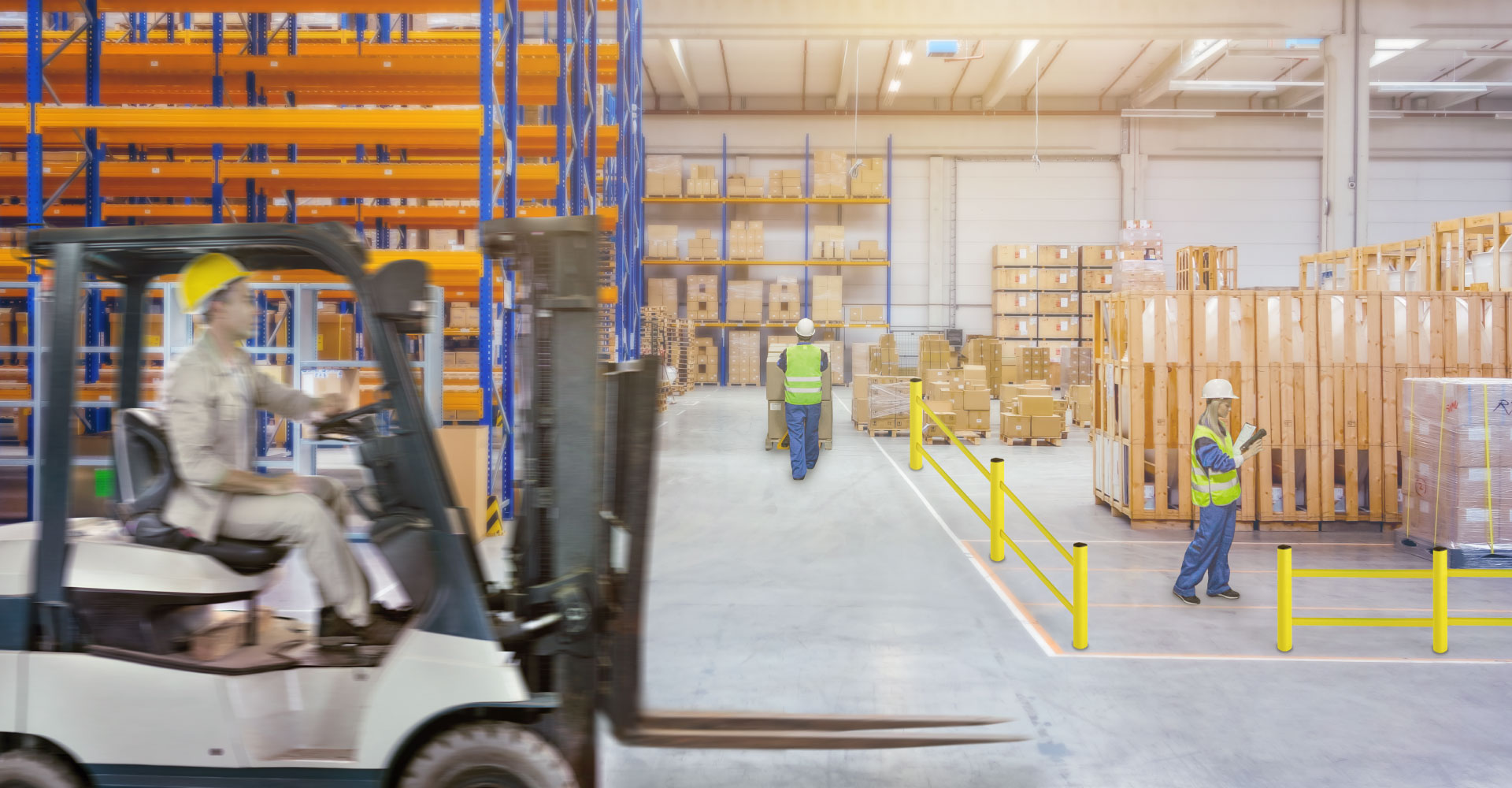There is currently a 25% labor shortfall for forklift operators caused largely by the astounding growth of e-commerce. Increased demand is making warehouses bigger and putting them closer to urban centers. Amazon’s “robot army” may be heralded as the industry’s poster child, but most warehouses still rely on regular forklifts with human operators, especially for larger goods handling. The shortage of skilled drivers and the influx of less experienced operators to fill the gap, combined with the pressure to meet tight deadlines, is a recipe for accidents.
UK statistics show that 43% of forklift incidents involve people other than the driver, and 80% of those were not even co-workers or supervisors. To improve pedestrian safety when working around forklifts, it’s important to look at what usually causes such accidents, the current state of accident prevention, and future solutions that could tackle this problem.
Common Causes of Pedestrian Accidents
There are three broad categories of forklift pedestrian accidents. Driver-attributed accidents can be caused by a variety of factors, including inattentiveness, fatigue that causes slow reaction times, distracted driving such as using a phone, and insufficient training. Environmental factors that can play a role are insufficient safety devices like signage, warning signals, and safety signs. Finally, careless behavior by pedestrians themselves such as looking at their phone or chatting while walking within hazardous range of a forklift can also lead to collisions.

Current State of Pedestrian Accident Prevention
Companies have adopted a variety of approaches to making drivers more aware of pedestrians and making forklifts more visible to pedestrians. For drivers, there are time limits for shifts and mandated breaks to avoid fatigue, as well as SOPs, training courses, and warnings to take extra care when driving near people.
Environmental safety methods include designating safe areas, creating physical barriers to separate forklifts and pedestrians, and installing mirrors at intersections. Reversing alarms and lights installed on forklift itself also serve to draw people’s attention when a vehicle is approaching.
While the adoption of these measures has helped to reduce the number of pedestrian collisions, there remains considerable room for improvement. Perhaps the biggest weakness of current approaches is that they are passive in nature and do not provide drivers with the alerts they need to prevent an accident on the ground when it is just about to happen.
Consistent reminders about SOPs, for example, may help keep safety top-of-mind but can still be misinterpreted, only partially followed, or completely ignored by drivers in the field. On top of this, layer after layer of warnings and reminders can be too much for a driver to remember or simply become background noise. Ideally, we need a way to prevent collisions when the driver needs it most: namely, in the cabin of their vehicle as close to the potential point of impact as possible.
Future Developments for Forklift Pedestrian Safety
Technology-driven safety solutions have the potential to reduce pedestrian accidents by enabling collision alerts and gathering data that can be used to identify potentially risky driver behavior and environmental factors that need to be addressed.
The installation of proximity sensors is a good example of how technology can be used to meet this objective. As their name suggests, the sensors use magnetic fields or ultra-wideband to detect proximity between mobile equipment, fixed objects, or people.
These systems are already available and use sensors placed around the warehouse to mark off certain areas as safe, areas where forklifts and people cannot be at the same time, speed warning zones, on personnel, and elsewhere. One difficulty is that the setup can become complex when defining the rules for interaction between possibly hundreds of objects and requires lots of planning. Also, there must be judicious monitoring to ensure all personnel wear sensors because they are invisible to the detection system without them.
AI vision is a rapidly evolving technology that enables companies to move beyond the limitations of existing approaches to forklift pedestrian safety by installing a system and cameras in the vehicle itself to capture the surrounding environment and alert the driver when its detects people approaching the vehicle.

One of the biggest advantages AI vision has for preventing pedestrian accidents is that there is no requirement for anyone to wear on-person sensors. The system detects anyone who comes within hazardous range of the forklift and sounds an alarm for the driver to take corrective action.
Another key advantage is that dangerous incidents can be recorded, making it much easier to identify their root cause and determine responsibility for insurance and legal purposes. Connecting the AI vision system to the cloud opens up even greater possibilities for managers to analyze specific incidents as well as build up a much clearer understanding of the environment their forklifts are operating in, the behavior of the drivers, and the environmental safety risks that they need to address.
Conclusion
As the technology matures, cloud-connected AI vision systems will enable companies to adopt a more proactive approach not just to preventing pedestrian accidents but enhancing the overall safety of forklift operation.
The VIA Mobile360 Forklift Safety System harnesses leading-edge AI vision technology to prevent pedestrian accidents. To learn more, please click the button below.
